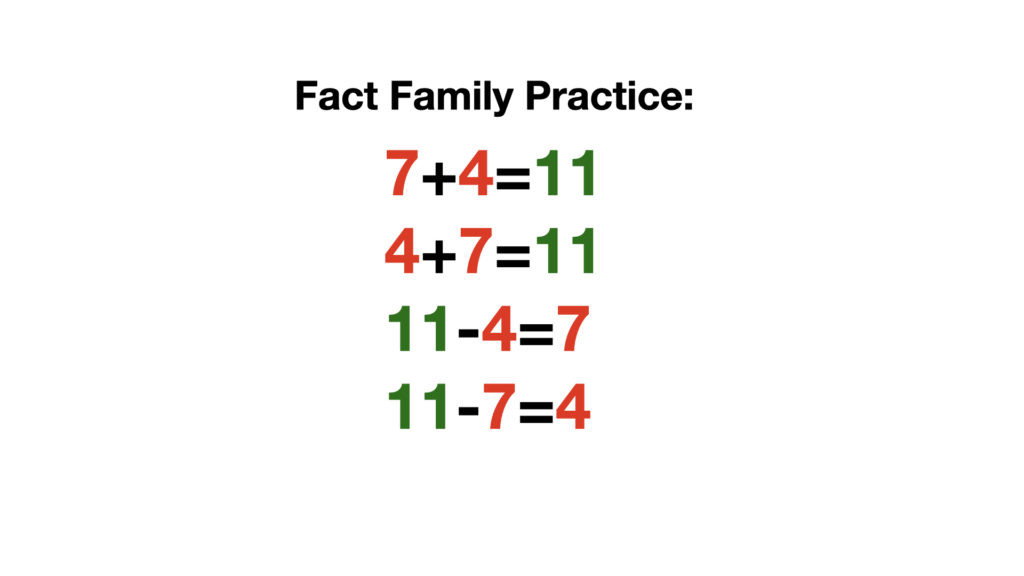Math facts are one thing that will need to be visited every summer. Some people work under the premise that more practice is better, but the opposite is true. All research proves that memorization without understanding and cramming for tests will not create lasting memories. Math teachers will agree that the most common mistakes they see in their most advanced math classes are simple addition and subtraction errors.
Drill will help facts stick, but has a negative emotion connected to it, resulting in igniting the srtess response. This is especially true for those who do not have a natural ability to recall data. The pressure of having to give an instant answer will cause the brain to shut down and not allow the student to demonstrate their true proficiency.
Summer offers a great opportunity to build fact competency and recall confidence. Practicing daily for 15 minute over the next three months will cement the facts. It’s the way we practice that will make the difference.
Using the worksheets collected during the year, pull out five problems representing different concepts to use for the practice. Vary the concepts from day to day. They can do the five problems while eating breakfast Monday through Thursday. Their job the rest of the day is to be filled with summer fun. My motto, “A problem a day and then play, play, play.”
To gain cooperation, I offer the choice of either doing 25 problems a day or doing 5 accurately? They always opt for accurate options. Because they are in such a rush when doing anything more than five, they are more inclined to make multiple careless errors. Most errors are made because children feel confident and they rush. By asking for 5 done accurately, they are forced to slow down and think about what they were doing when solving the problems and double check their work.
Students need to be made aware that when they rush and make errors, they are costing themselves more time later on. Every time students practice anything wrong, they have to practice it correctly five times to make sure they are giving their brains the right information. Slowing down and being mindful of what they are doing will give the brain a clear message, which will save them time later one.
This process of such review actually supports the way the brain naturally stores and retrieves information. If we give just a few minutes of attention to what we learned a couple of times a week, it sends a message to the brain that the information is important to save.
Because students will not be pushing buttons to record their answers, they need to practice with pencil and paper, which is the way they will be tested. This involves other senses and creates a stronger brain to hand connection, thus improving the speed at which the students will be able to recall the facts. Practicing on a computer will not give the brain the same feedback connected to the concepts and therefore is quickly lost.
Some children are artistic and benefit from color to improve recall. I recommend orange and green for the addition/subtraction fact families and blue and red for the multiplication/division fact families. The addends are orange and the sum is green. The factors are red and the products are blue. When children practice this way they will begin to see they are merely looking for the missing color. All addition/subtraction facts consist of two orange numbers and one green, and conversely multiplication/division problems have two red numbers and one blue. Having children write their fact families using these colors will be an excellent form of practice.
Having students write their fact families as demonstrated in the picture below is powerful. When they take the time to shift from one color to another, they are paying close attention to what they are writing. Since they will silently verbalize what they are going to write they are engaging the auditory part of their brains. The writing adds a kinesthetic component and looking at it creates the visual. This provides a multi-sensory experience. The more senses they involve in learning new concepts, will assure them that the memories will last longer.
Research has proven that we can improve memory with songs, picture stories, and written stories. Our brains remember stories and recall in images, so making up a story using rhyming words with the numbers and illustrating it, will cement the facts. Drawing their own pictures gives them another exposure to the fact family kinesthetically. It’s fun and because it is an image, they will remember it better than the number sentence.
The picture below is an example of the sentence story for 7+4=11 , “John and Suki went through the four (4) door at the 7–11 to get Slurpies. When they see 11–7= they will know they need to recall an orange number. Practicing the retrieval of the picture will speed recall. They can pull up the picture with a green 11 and an orange 7 and they will be able to close their eyes and see the picture. Their speed will increase more they practice retrieving the mental images. Notice how color is used below.
Making triangle flashcards using the colors and no operation signs is very helpful will also aide in recall. These cards need to be done by the student. To practice recalling which addend or sum is missing, they can cover one tip of the triangle flashcard shown below a name the missing number. The flashcards should only be used after students have had several days of recalling the story while looking at their picture. Once the story flows from them effortlessly, they will be ready for the abstract aspect of fact recall.
Teachers have expressed concern over the amount of time it takes to do these steps. What they soon discover is the more time they give the sensory system when learning abstract concepts, the quicker they can move on and the better their students’ retention becomes.
I highly recommend “Memory Joggers” for multiplication and division. They are available. Click here. When you purchase them, you will receive personal instruction via zoom to maximize their use. Within four lessons your children will know their three multiplication and division facts. Parents are amazed at how my approach to multiplication and division facts dramatically changed their children’s self-image related to their math ability.




Mrs. O’s strategy has been a life-saver for my visually inclined, artistic daughter! She would have anxiety anticipating math time and would guess her way through the lesson. Now, she is excited for math! She is constantly repeating Mrs. O’s stories throughout the day and is jumping with excitement every time she answers an equation correctly. What’s more important is that she’s retaining the information. Thank you Mrs. O!
She is learning that she does have math aptitude. She needed a visual approach.
Most children have math aptitude that goes untapped. Within the first three weeks, they begin to make connections that demonstrate their in-depth abstract thinking abilities.